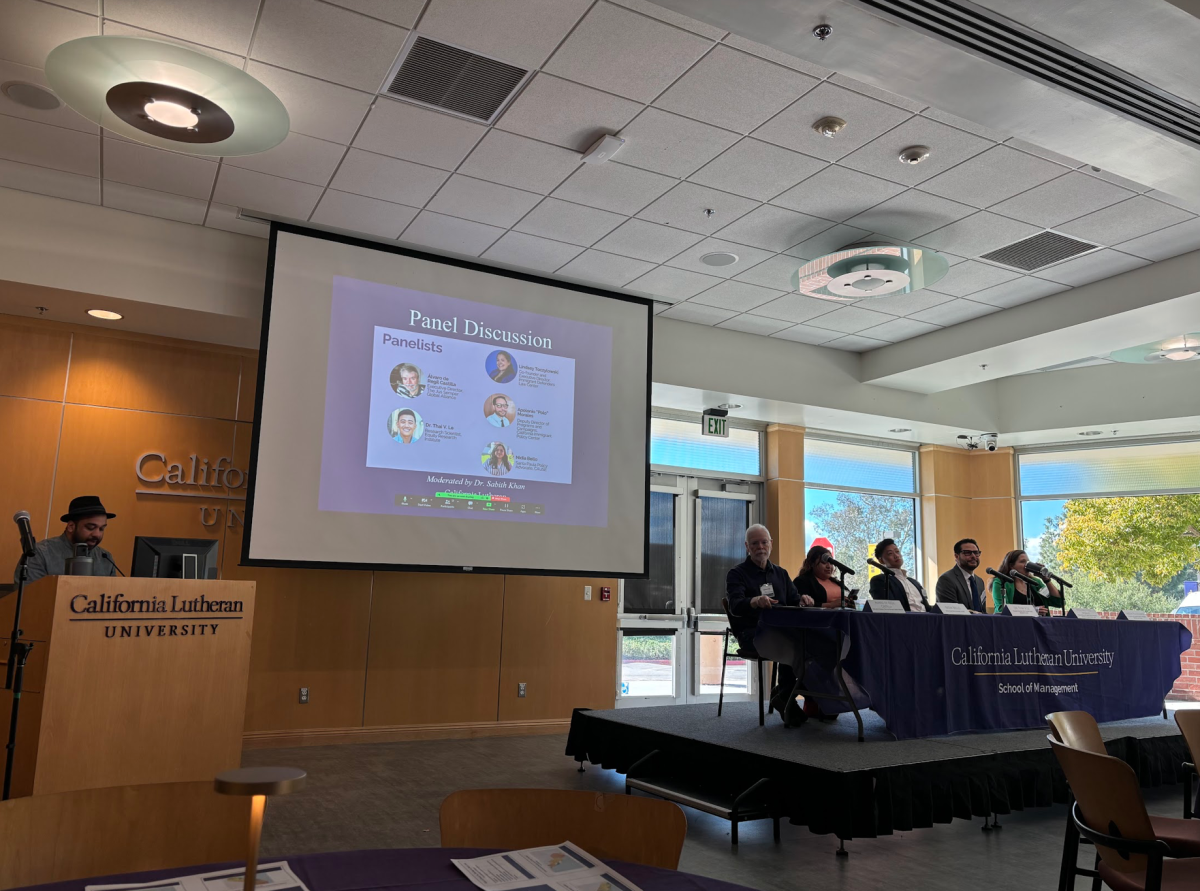California Lutheran University’s School of Management hosted the “Separating Myths from Realities” conference this past Thursday, Feb. 22.
The conference consisted of two parts: the challenges that undocumented immigrants face and the economic contributions that undocumented citizens make to the United States of America.
Panelist, Co-Founder and Executive Director of Immigrant Defenders Law Center Lindsay Toczylowski said the main focus of the conference was separating the myths about undocumented Californians from the reality.
The conference started with a presentation by Professor of Economics Jamshid Damooei, where he explained the findings of his research. Damooei presented facts, data and charts about undocumented citizens in California that knocked down misconceptions.
“What they really think of undocumented immigrants is not what’s really been developing over many years, decades. People think they just arrived,” Damooei said.
According to Damooei, 31% of immigrant citizens have been in the United States of America for more than 20 years. In comparison, he said 72% of them have been in the country for more than ten years. This is a myth Damooei debunked during the conference.
Another misconception that Damooei explained was about taxpayers. He said many people believe immigrants do not pay taxes, but according to Damooei, they do, along with social security, and they do not get any reimbursement.
Damooei said his report shows that immigrants are contributing to the economy and subsidizing the country’s social security.
“If you are here for more than 20 years, what does it take to call a place home? Just think about it. If you’re here, you’re contributing to every aspect of the economy. Why should you be set aside?” Damooei said.
Damooei also shared his plans to make his study available to more people and eventually reach city council officers and supervisors, to raise awareness and bring attention to the issues.
“We’re going to send it everywhere. We’re going to send it to all the city council people here and other cities,” Damooei said.
The research will also be sent to different people in Sacramento, CA along with videos edited by Cal Lutheran film students in Associate Professor of Film and Television Mahmoud Salimi’s class.
Following Damooei’s presentation panelists discussed Damooei’s research, and confirmed the facts previously stated with their experiences in each workforce.
Panelists included were Research Scientist at the University of Southern California Dornsife Equity Research Center Thai V. Le, Executive Director of The Jus Semper Global Alliance Álvaro de Regil Castilla, Deputy Director of Programs and Campaigns at the California Immigrant Policy Center About Apolonio Morales, Santa Paula Policy Advocate Nidia Bello, and Toczylowski.
Le talked about how the chilling effect can be seen around the immigrant community. He said the chilling effect is when individuals refrain from engaging in activities for fear of getting punished by the law.
Le said undocumented citizens live with fear that they might get deported. Consequently, Le said immigrants find themselves scared to reach out to resources that are allocated specially for them.
Toczylowski said that undocumented citizens are often viewed as a burden on society, claiming that the border has too many people coming in and can’t be integrated successfully into American society. Toczylowski debunked this myth and said when looking at the California’s data, undocumented Californians are a huge part of the state’s economy.
“A conference like this really starts to dig down into the reality; to dig down into all of the contributions that immigrants are making,” Toczylowski said.
Damooei said Cal Lutheran takes pride in being an institution that favors social justice and seeks for racial and gender equality in the community. According to Damooei, every single issue addressed during the conference is important to the Cal Lutheran community.
“This is a topic for Cal Lutheran to get into. Discover more, bring it out, bring engagement,” said Damooei. “We’re asking people to come here, to listen, to reason, to learn, to understand.”
The conference also offered simultaneous interpretation in Spanish through headsets for those who attended in person.







